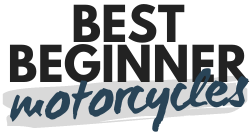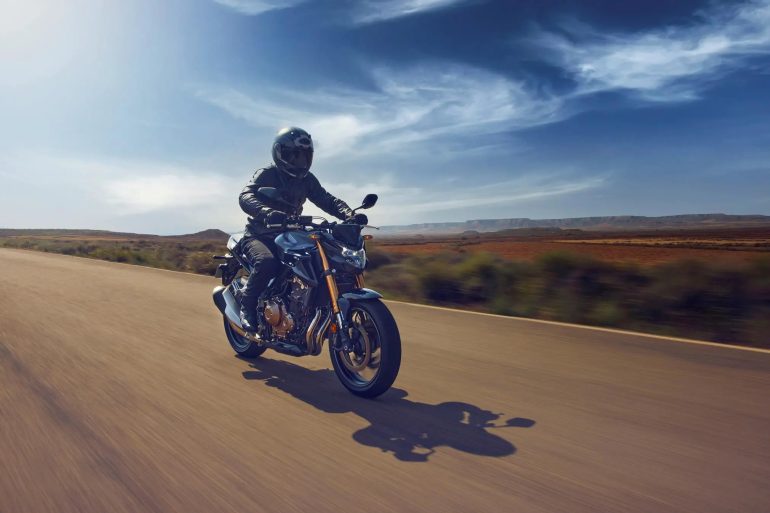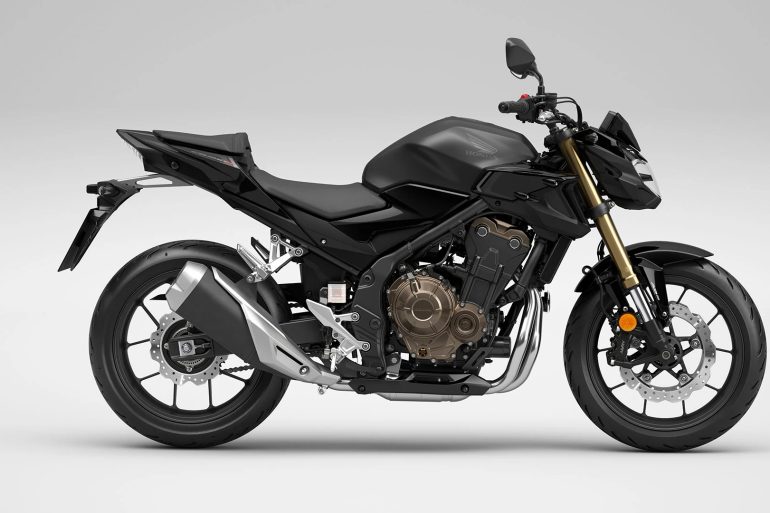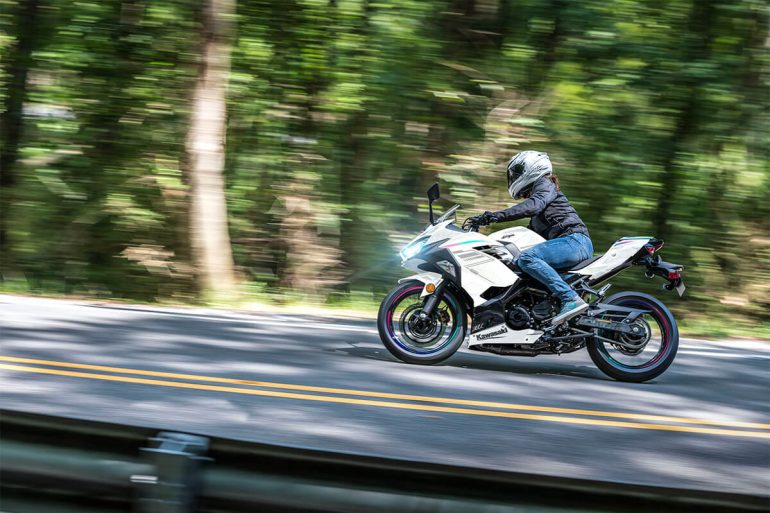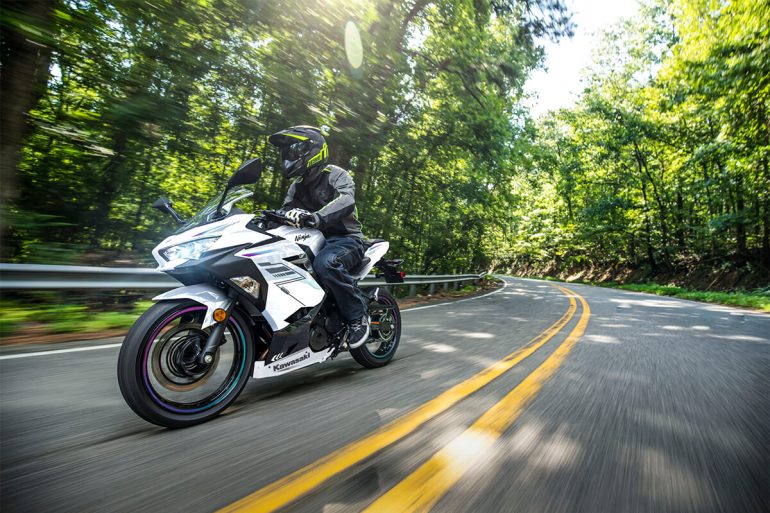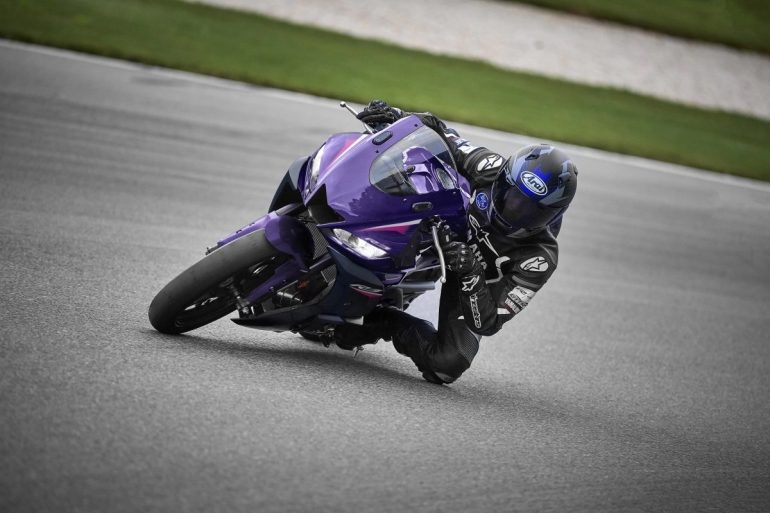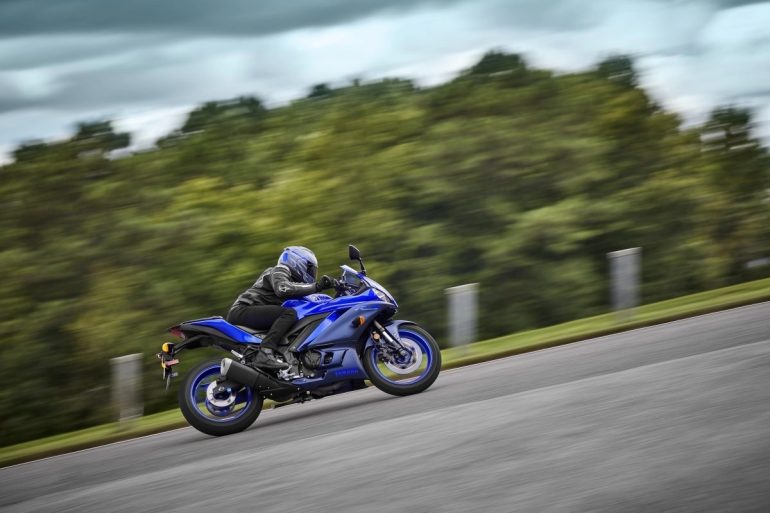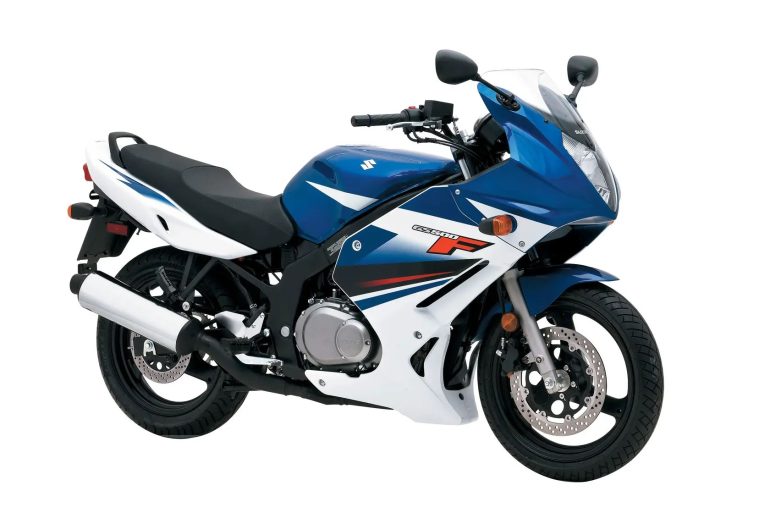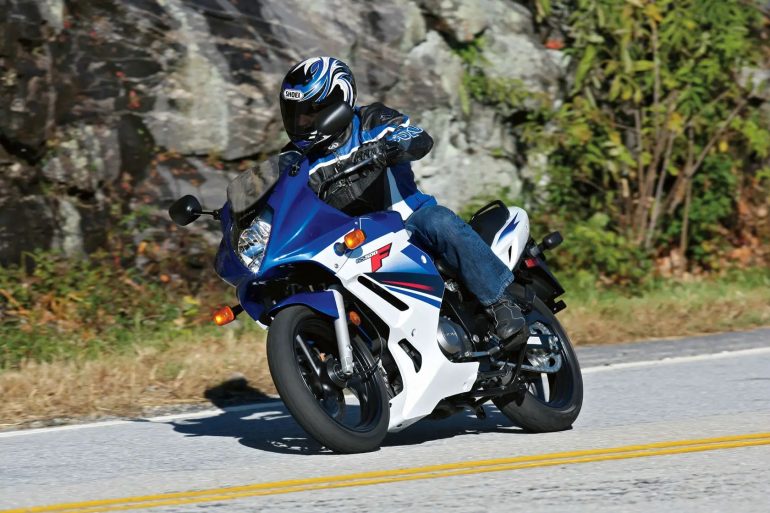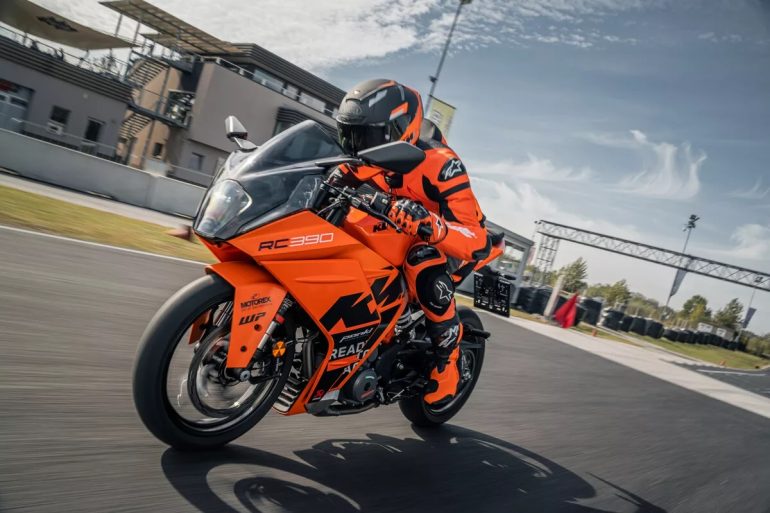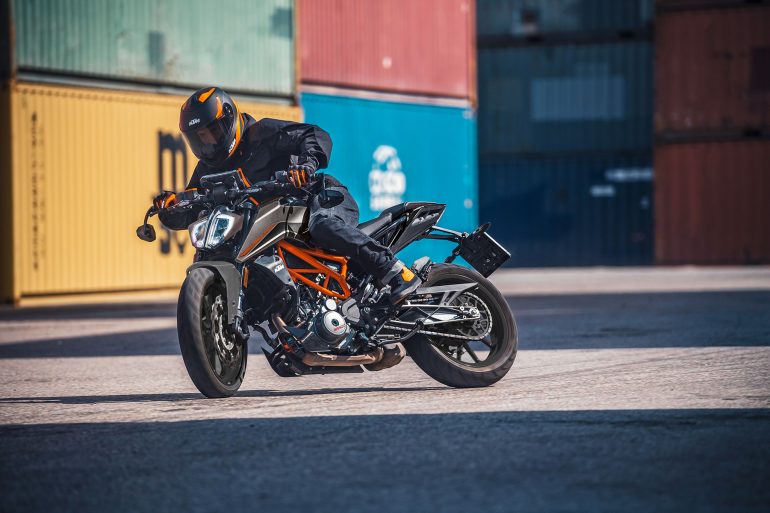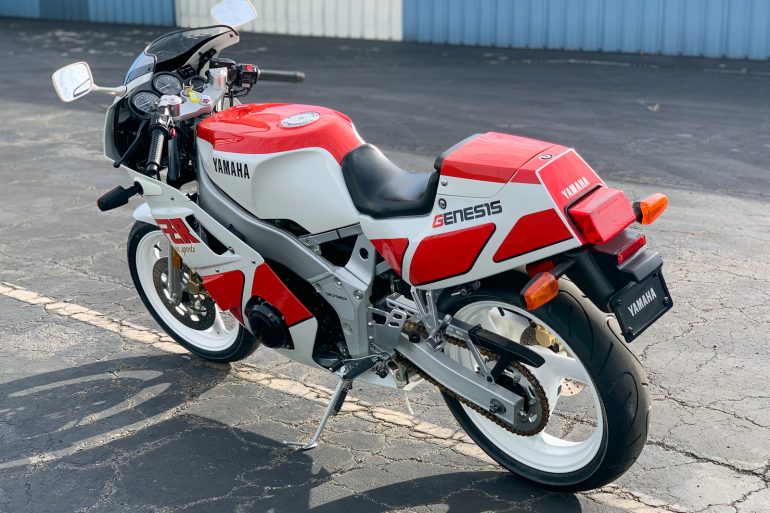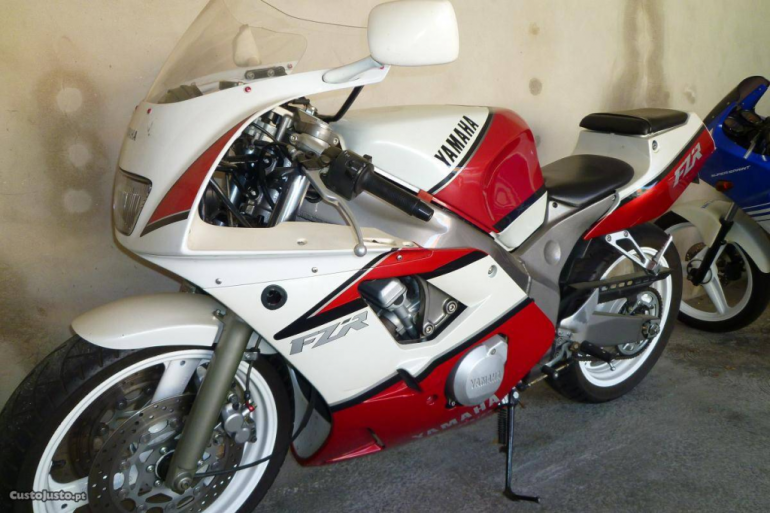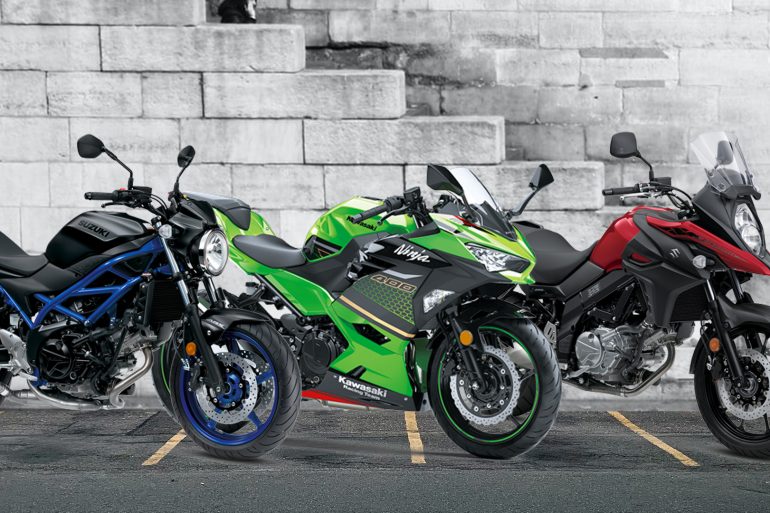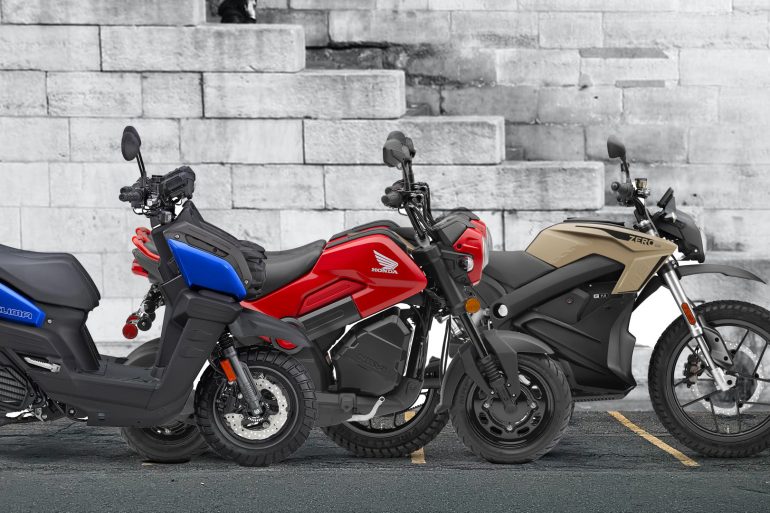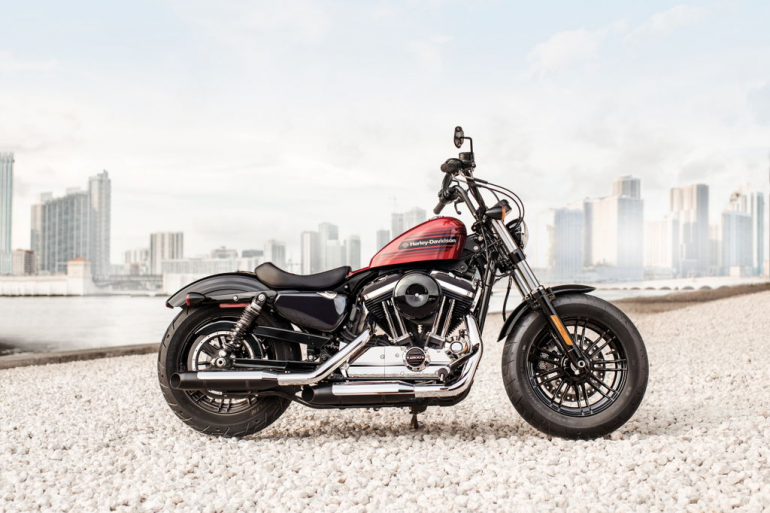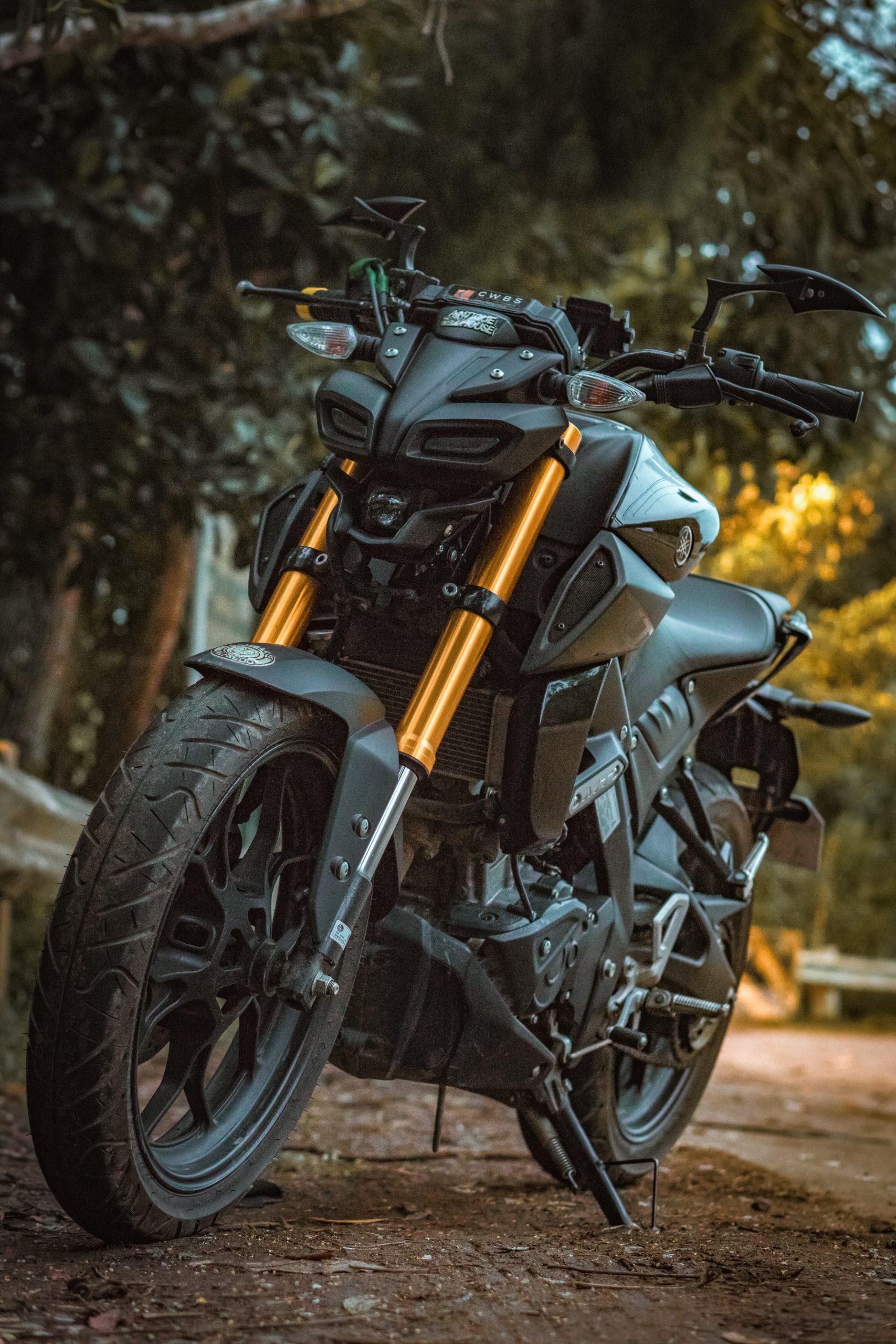The Best Used Sport Bikes For Under $5,000
Updated April 27, 2023 by Simon Bertram
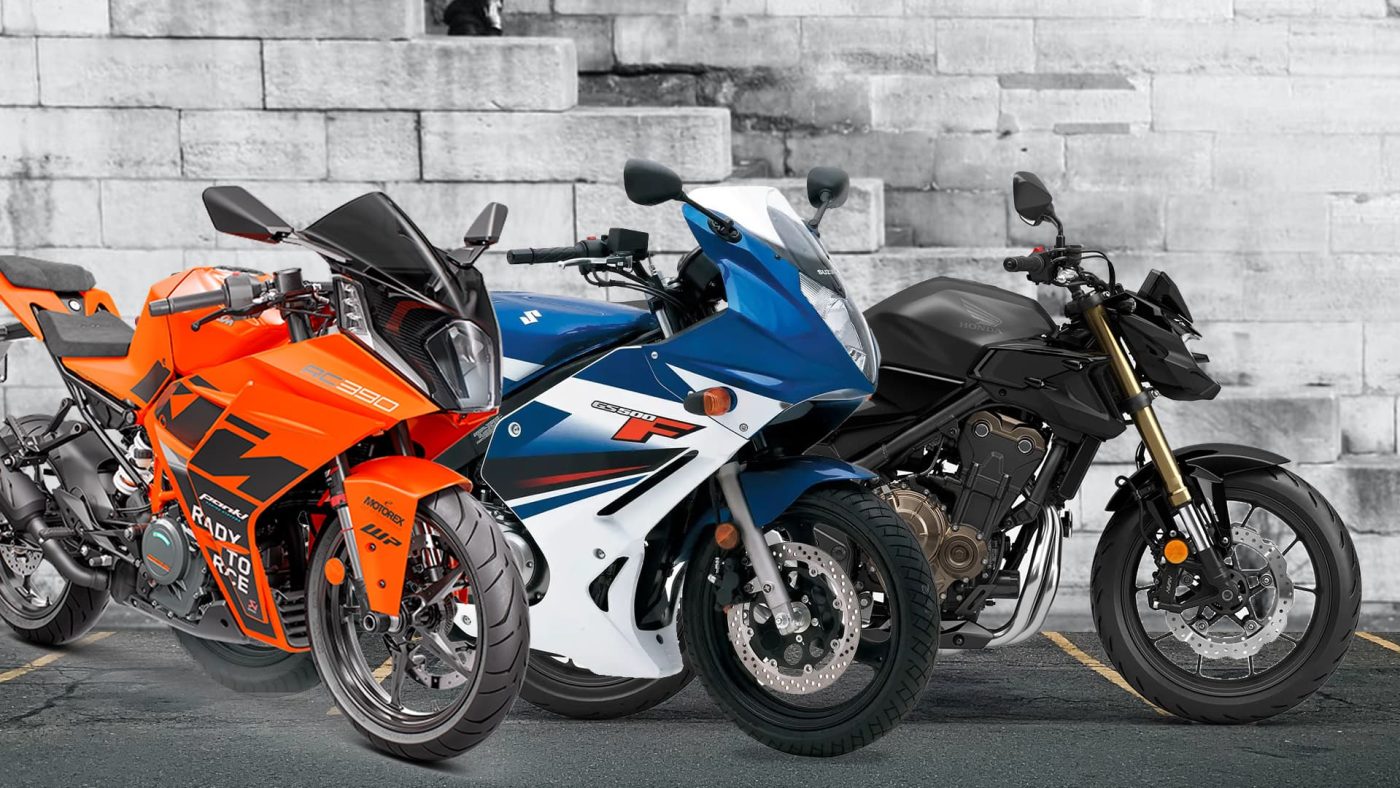
You Can Get Some Amazing Bikes For Under $5k!
Article Quick Nav
These are the best used bikes under $5,000 for novice riders:
The truth of the matter is that sport bikes, of any and all kinds, and cruisers are constantly trading places year after year for the most popular market segment. It is very common for a beginner rider to gain their license with a sport bike in mind, be it a sport naked, a retro sport, a supersport, or even with the goal of one day moving all the way up to a superbike.
However, it is also common for beginner riders to buy above their skill level. This is where a lot of self restraint and the reality that you are going to be a beginner or "new" rider for at least 3 seasons, if not more, comes to bear. Do not go out and buy a Kawasaki ZX-10R superbike or a used Yamaha YZF-R6 supersport, as both of those bikes will happily kill you without a second thought.
Start "low and slow," learning how the most agile and nimble of motorcycles out there "talk" to you. Sport bikes can also be quite expensive if you're buying new, so while you're learning, buying a used bike in good or better condition will save you money, which you can turn around and put into getting quality gear to keep your skin on and your head safe!
Considerations When Buying A Used Sport Bike
Pick a Good Fit
By this I mean pick a bike you feel comfortable sitting on and can reach the ground flat footed or nearly so. This small detail helps riders feel confident in keeping the bike rubber side down and speeds learning. Often overlooked in favour of other criteria, I promise that putting comfort as priority one will be the best guideline to follow in making your choice.
Go Low to Start
Keep your engine size in the 250 to 500 cc size ideally. Bikes in this range are strong enough to move you around easily if you’re average size, and also very lightweight and maneuverable. Don’t worry about outgrowing the bike. This likely won’t be the last one you buy, and a quality learning bike is easy to resell when you’re ready to move up.
On the other hand, none of these sport bikes are lacking for power and performance so don’t get too cocky when riding these machines. Most of them have a dose of borrowed tech from their super bike siblings after all.
Look for a Bargain
Brand new has its charm in that you’re not inheriting someone else’s blemishes or problems, but on the other hand, bikes depreciate quickly so why spend more than you have to?
Plenty of owners take good care of their bikes and wisely keep up with the maintenance. Those are the bikes you’re after and they can usually be purchased for $4000 (or even half that in earlier model years).
Chances are good your first bike is going to fall over as you learn to handle it. Even seemingly harmless, low speed tip-overs leave scars. It’s not nearly as painful to add another scratch to a “previously loved” paint job rather than putting in the first one yourself.
About Our Selections
These selections considered ease of use, rideability, price, and how effective each motorcycle was in helping the beginner or newer rider learn the intricacies of riding. We are confident that any of these bikes will be great starter bikes for those wanting a bit of adrenaline and excitement in their rides, without the bike trying to kill you.
We must stress again that you absolutely should not go out and buy a supersport right away. There are a couple of "junior supersports" on this list, but in reality they are nowhere near the power and savagery of a proper 600cc supersport. Who knows, maybe you might enjoy a sport naked more, and change your mind and move up to hyper nakeds, street monsters, and streetfighters instead!
Honda CB500F
A sport naked with some real guts to it, but also extremely beginner friendly
Why We Picked It:
The Honda CB series of motorcycles have existed seemingly forever and have become legendary for a multitude of reasons, but for this list, I am focusing on the CB500 twins that started production back in 2013, specifically the CB500F.
All the Honda 500 Twins from 2013 and forward share the same 471 cc (28.7 cu in) liquid-cooled 4-stroke 8-valve DOHC Straight-twin engine, and in the naked style CB500F this is just a brilliant setup. With just a little under 50hp, and the well-sorted Honda chassis and ergonomics, finding your “at home” sense of comfort on the CB is easy.
The braking is handled by twin discs up front, and keep a sharp eye out when looking for a used model, ABS was optional on the CB500F. Overall the ride is composed and sporty without being too aggressive. The CB will not behave in strange ways with new riders’ mid-corner mistakes, thanks to the decent 41mm front for and the preload-adjustable rear shock.
With just 410 to 416 lbs to move around plus a rider, the power will keep you smiling, but this is a Honda bike, so you can be assured the whole machine will be smooth and drama-free. It’s part of the reason why the CB500 twins made the list of the Best Motorcycles of the 2010s.
Specifications:
Price: $6,799 (2023 MSRP)
Engine: 471cc parallel twin
Power: 47 HP
Torque: 32 lbs-ft
Transmission: 6 Speed Manual
Curb Weight: 416 lbs
Ideal For:
Beginners looking for a sport naked motorcycle that can be both a corner carving machine and a comfortable commuter
Highlights:
A more upright standard seating position means you can ride this bike all day in comfort
Agile and "flickable" while remaining extremely stable and planted, a bike that will help build confidence in the corners
Dual zone ABS, assist and slipper clutch, Showa suspension, and ride-by-wire to smooth out power delivery since 2020. Between 2013 and 2019, ABS was optional
Learn More:
Kawasaki Ninja 250R/Ninja 300/Ninja 400
One of the most popular model of start sport bikes out there, for good reason!
Why We Picked It:
I doubt there’s a more popular sport bike for learning on than the acclaimed Ninja 250R. It’s been in the rotation for Kawasaki Motorcycles since 1986 and really didn’t change a whole lot until 2008. Even then it was mainly just updating the outward appearance of the body panels fueling the changes.
They are mainly carbureted (the only possible downside to these bikes), with the exception of the last two years when Kawasaki produced some fuel injected specimens. ABS and clutch assist technology were also added in the last few model years, making the 250R easier and safer to ride.
The Ninja 250R morphed into the new Ninja 300 model for 2016 in some markets, so feel free to pick up just about any year 250 or 300 Ninja you can find for under $5000 and know that you’ve picked a great bike.
While the Ninja 300 was an immensely popular motorcycle and is still a great used bike, the 2018 and later Ninja 400 replaced it on showroom floors. With just under 50 HP with a 12,000 redline, the only major difference between the 300 and 400, apart from displacement and 10 more HP, was the introduction of the steel trellis frame that was introduced across the entire Ninja range. It became the de-facto starter bike in the Kawasaki range, and as it sold for $5,000 new in 2018, you can find some lightly used ones for around $4,000 or thereabouts.
Super lightweight, outstanding handling, low to the ground, and light clutch pulls make these bikes very forgiving for learning on. With a long heritage like the 250R and its successors has, parts are readily available and affordable. Reliability is good and insurance is inexpensive and usually easy to get.
For more on the Ninja 250R, check out our review here.
Specifications:
Price: $5,299 (Ninja 400 2023 MSRP)
Engine: 296 to 399cc parallel twin
Power: 41 to 49 HP
Torque: 17.5 to 28 lbs-ft
Transmission: 6 Speed Manual
Curb Weight: 370 to 385 lbs
Ideal For:
Beginner riders looking for an uncomplicated, communicative sport bike to start out on
Highlights:
Very good power to weight, making them nimble bikes that also love to lean into corners
Comfortable sport-standard riding position
ABS is standard since 2015 on the 300, and all years of the 400. Both also feature an assist and slipper clutch.
Learn More:
Yamaha YZF-R3
A junior supersport that will teach you everything you need to know if you show it respect
Why We Picked It:
First available in 2015 the slim and sleek, the R3 newcomer has really caught on not only with new riders but also with experienced ones on the track. That’s a sure sign you’re looking at a very lightweight, nimble bike perfect for learning to push your performance limits.
Recently I spoke with the owner of the Too Cool Motorcycle School — Trevor Dech — about what beginner sport bikes he was recommending to his students. Trevor first told me the Ninja 250R as I expected, but the next bike picked was the Yamaha R3. He says the bike is a nice mix of power and handling and is great fun on a track. It also doesn’t look like a beginner sportbike.
The R3 has noticeably more horsepower and torque compared to the Ninja 250R and the 300, but lacks the clutch assist found on the Ninja 300. It is a much more raw bike, meant to teach you how to ride properly without using the "crutch" of rider aids, despite it being a competent bike to ride as is.
Yamaha builds bulletproof and very low maintenance bikes. The R3’s simple design is no exception to this, and that point is a good one to remember when sizing up other bikes.
One obvious example is that valve clearances only have to be checked/adjusted every 43,000 kms or 27,000 miles. That’s hard to beat.
If you want to spend more time riding rather than working on your bike, the Yamaha is a strong contender for your money.
Specifications:
Price: $5,499 (2023 MSRP)
Engine: 320cc parallel twin
Power: 50 HP
Torque: 21.8 lbs-ft
Transmission: 6 Speed Manual
Curb Weight: 375 lbs
Ideal For:
Beginner riders with a season or two under their belt that want to take the next step into supersports
Highlights:
Very raw, light, and agile, will communicate everything to you about how to ride it if you "listen" to it
Demands respect, but when you do respect it, very few small displacement bikes can even come close to the thrill it provides
Designed to not have any rider aids apart from ABS, so that you learn how to ride it on a track correctly
Learn More:
Suzuki GS500F
Sometimes the best school is old school, especially with this sport touring gem
Why We Picked It:
Available from 2002-2009 in North America, the GS500F is a fantastic sport bike for the newer rider thanks to a comfortable riding position and smooth power delivery. Many times the bikes that get recommended for new riders fail to consider how well they would perform out on the highway on long rides that can mean a vast array of riding conditions. The fairing on the GS offers reasonable protection, and the bike overall handles crosswinds and pressure waves from traffic flow with remarkable stability. These sorts of attributes go a long way to the overall enjoyment of those long rides.
Don’t expect to find any high-tech features on an older bike like the GS500F, what you get is comfort, smoothness, reliability, and a sporting nature to match the looks. I totally admit that there are other bikes with greater outright performance, but the GS is the one that gives you more overall in a wider set of situations. Use it for city commuting, 2 up rides, weekend getaways, take your pick and the GS500 will be a rock-solid companion while you learn and improve your riding skills.
Even a decade after it left the North American market, the Suzuki GS500F remains one of the most recommended motorcycles for new riders. There are many great examples well under $5000, use some of the leftover budget for fresh tires and you will get many rewarding miles from the GS500F.
Specifications:
Price: $4,399 (2009 MSRP)
Engine: 487cc parallel twin
Power: 51 HP
Torque: 30.4 lbs-ft
Transmission: 6 Speed Manual
Curb Weight: 439 lbs
Ideal For:
Newer riders that are looking for a sport bike that is a competent and comfortable tourer, and one of the most popular models of its day
Highlights:
An almost standard seating style with a minimum of forward lean for all day sport touring comfort
Won't set any lap or speed records, but that is not the purpose of this bike. As a sport tourer, Suzuki made this bike for you ride from dawn to dusk without needing to stop at the chiropractor halfway through
Nothing in the way of rider aids, but that is the "old school" way of learning to ride. Awareness, preparedness, and the "idiot filter" between brain and right wrist.
Learn More:
KTM 390 Duke & RC390
A powerful engine shared between two different styles: Sport naked and junior supersport
Why We Picked It:
So now we have a comparison within this list between these two very sporty offerings from Austrian builder KTM. They are also my current favourites when it comes to pint sized sport bikes for a few different reasons.
These sexy beasts only came to North America in 2015 but were available overseas two years earlier.
While they are unfortunately the most expensive and maintenance heavy choices, they are also the flashiest when it comes to styling and are equipped with fuel injection and ABS.
Even though they are relatively inexpensive machines, they don’t look like it thanks to the very cool styling KTM has put into the Duke and RC.
KTM likes to build bikes that outperform all others unapologetically, even when it comes to beginner bikes. One example of this are the WP inverted front forks. This lowers unsprung weight and allows for better handling, especially considering the Duke and RC are lighter than the other bikes to begin with. None of the other bikes listed have inverted front forks, so this is an obvious way to get better quality for your money.
The fun factor riding these two is off the charts. These bikes provide excellent low end power that also will entertain in the higher rpm band. Of all the bikes listed, I think these two are ones potentially a rider could stick with long term- especially if they are primarily city riders.
The 390 Duke is essentially the naked sport bike version of the RC390. Same frame, same engine and transmission- just with different packaging.
In the Duke, you’ll get a much more upright seating position and better rider comfort, while on the RC390 you get a little better aerodynamics and performance… but only just slightly better.
Remember what I said about putting comfort first? It applies here and so I would lean towards the Duke over the very alluring RC that way.
Additionally the full fairing on the RC tends to inflate the price right up to our budget’s $5000 limit, even on the used market. Not to mention that if you damage the fairing, it’s not cheap to replace- that’s not a problem at all on the Duke.
Specifications:
Price: $5,899 (2023 MSRP for both)
Engine: 373cc four-stroke single
Power: 43.5 HP
Torque: 26 lbs-ft
Transmission: 6 Speed Manual
Curb Weight: 330 to 379 lbs
Ideal For:
Beginner riders that are looking to get into junior categories of streetfighter nakeds (390 Duke) or supersports (RC390), and have the maturity to take it slow and learn progressively
Highlights:
KTM's motto is "Ready to Race," and both of these bikes come with very sport oriented suspension and frames, making them unbelievably agile and flickable
Because of using a single, torque is available from way down low in the revs and just builds from there. Be smooth with your right wrist, and you'll be surfing the front edge of that torque all the way up to near the redline.
Every bell and whistle KTM has gets added to these bikes. Traction control, lean sensing cornering ABS, selectable "supermoto" ABS, Quickshifter+, full TFT dash displays, and LED lighting all around. All standard on both bikes.
Learn More:
Yamaha FZR400
A junior supersport from the 20th century that even today is a stellar bike... if you can tame it
Why We Picked It:
I’m going back in time for my last pick of best used beginner sport bikes to a truly awesome machine produced by Yamaha from 1986 to 1994: the FZR400.
Logically, I should instead talk about the Honda CBR300R because it’s another very good modern option that can be had used for under $5000, but it’s also too similar to the Ninja 300 and R3. If you like the Ninjas and R3, but prefer it in red, definitely have a look at the Honda — you won’t be disappointed.
That’s just too predictable (and you deserve more out of me than that), so here you go… something different.
If you’re a confident learner who wants a machine that will stand out in a crowd, yet easily keep up with the aforementioned bikes and even leave them behind, it’s the FZR for you. You also have to like to work on your bike, because these FZRs are collector items these days (and carbureted). Parts for it are still readily available, but it’s old school and won’t have ABS or clutch assist technology on it.
If you’re up for it these, Yamaha bikes were and still are outstanding and exciting bikes to learn on. This bike has an inline four cylinder engine, as opposed to the twins and singles I’ve talked about so far. That means it will sound just like the bigger superbikes we have today, but slightly higher pitched, as it will rev considerably higher to a 14,000rpm redline.
With twice or even 4 times the number of cylinders than the other bikes I’ve talked about thus far, the FZR is a totally different animal.
Specifications:
Price: $4,500 (1994 MSRP)
Engine: 399cc inline four
Power: 60 HP
Torque: 31 lbs-ft
Transmission: 6 Speed Manual
Curb Weight: ~380 lbs
Ideal For:
New riders looking for a blast from the past sport bike that was a road going replica of a race bike, with a lot of road-friendly (hence beginner friendly) bits added
Highlights:
Has the torque profile of an inline four, meaning you do need to rev the nuts off of it over 7,000 RPM to get most of it. It does increase sharply between 6,000 and 7,000 RPM, and once you're between that range and the 14,000 RPM redline, the bike will absolutely deliver the mail, so be ready for it
Lightweight and very agile for its day, and even today is an absolute beast in the corners, flicking left to right and back again through the twisties
No rider aids and a carbureted engine. This is from the day and age where you were the safety system of a motorcycle, so when you ride this bike, have your brain fully switched on in rider mode.
